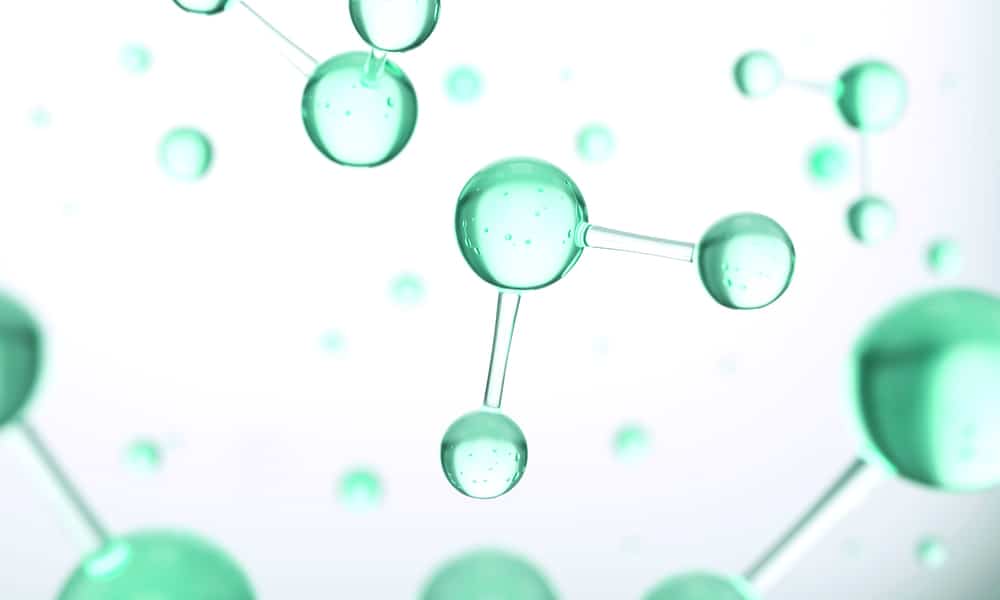In order to accelerate the reduction of their own carbon footprint and support their customers with energy transition, Bouygues Construction and Bouygues Energies & Services signed an agreement on 15 October to invest in PowiDian, a start-up specialising in the self-sufficient production of hydrogen-based energy. This is the best way to reach zero carbon.
Over 900,000 tonnes of hydrogen are used every year to meet the needs of industry in France. At present, these 900,000 tonnes are produced 95% from fossil fuels. They are responsible for the emission of nearly 12Mt of CO2 in France, i.e. about 3% of national emissions. Consequently, innovations have been on the increase to reduce the carbon footprint of this potential option for global energy transition and to make hydrogen go green.
Hydrogen and renewable energy: a zero CO2 solution
Electrolysis and renewable electricity – from solar, wind or hydroelectric dams – quickly emerged as the least polluting means of producing hydrogen. How does this work? It involves breaking down water molecules (H
2O) with renewable electricity in order to obtain a gas called ‘green H2’ (green hydrogen), which only has an impact on the environment during the production of electricity. ‘
This innovation is fully in line with the principle of a circular economy since it allows the use of locally generated renewable energy in turn to produce alternative carbon-free energy for transport and industry.’, points out Caroline Mazzoleni, Manager of SMART ENERGY, Products and New Technology Department, Bouygues Energies & Services.
Green hydrogen: three uses at the forefront of energy transition
Hydrogen could act as a substitute for fossil fuels in many ways and, as a result, is seen as a key factor in energy transition. The main uses are as follows:
Powering all kinds of vehicles (cars, buses, lorries, bikes, refuse lorries, etc.)
‘A
green hydrogen vehicle emits absolutely no pollution, fine particles or C02 whilst being driven. Even better, it emits only water vapour and by doing so purifies the air. This is why in South-east Asia, for example, there are plans to switch all fleets of vehicles operating in city centres to green hydrogen.’ Caroline Mazzoleni, Manager of SMART ENERGY, Products and New Technology Department, Bouygues Energies & Services.
Decarbonising industry by replacing grey hydrogen
Current hydrogen consumption in the various industrial sectors where hydrogen is used as a raw material is mainly of fossil origin. Replacing this grey hydrogen with green hydrogen is clearly a priority for the industry as regards decarbonisation and is a strong focus when it comes to planning for energy transition.
For stationary use
Green hydrogen can, in some specific cases, be used to provide electricity.
- This is the case with hydrogen generators.
Requirements in terms of air quality and noise pollution are leading certain sectors of activity such as events, construction and port areas to look for innovative solutions for a temporary power supply. In the absence of an electricity network, the use of a stationary power generator composed of hydrogen fuel cells may be a suitable solution for replacing traditional diesel generators.
- The example of energy supply to an isolated site
For these types of sites, green hydrogen is particularly suitable as a long-term storage solution. In practice, the solutions put forward consist of primary production of electricity from a renewable source, as well as a hybrid storage system, including long-term storage based on hydrogen in the form of a hydrogen cell and tank.
Bouygues Energies & Services supports all local authorities, districts, regions and manufacturers looking for an alternative energy solution (CO2 neutral and renewable) and the decarbonisation of their transport systems and services. This is an emerging market – which is boosted by environmental issues – and in which green hydrogen will play a key role. Driven by this conviction, Bouygues Energies & Services has been designing, installing and maintaining green hydrogen systems for its customers for almost two years. This is primarily thanks to PowiDian, which has enriched the Group’s service offer with an innovation capable of providing the same or even greater energy self-sufficiency – than that – obtained from a diesel power generator. There is just one difference – it does not emit any chemical pollution or noise.
MobHyl Powerâ: a hydrogen-powered generator will soon be on Bouygues Construction building sites
In order to make a start on the decarbonisation of its own construction activities and to offer its customers a real-life example, Bouygues Construction Matériel headquarters in Chilly-Mazarin will soon be equipped with a renewable hydrogen generating station and a distribution station. In practice, a generator will be made available to Bouygues Construction sites in the Île-de-France with hydrogen produced locally at the Chilly-Mazarin headquarters. In addition, handling and loading will now be mechanised there, with forklifts running on green hydrogen. In terms of transport, several vehicles used for delivery to construction sites will also be converted to hydrogen. This is further proof, if proof were needed, that Bouygues Construction believes in the interest on a wider scale in this renewable energy source and is positioning itself as an ambassador for energy transition.




